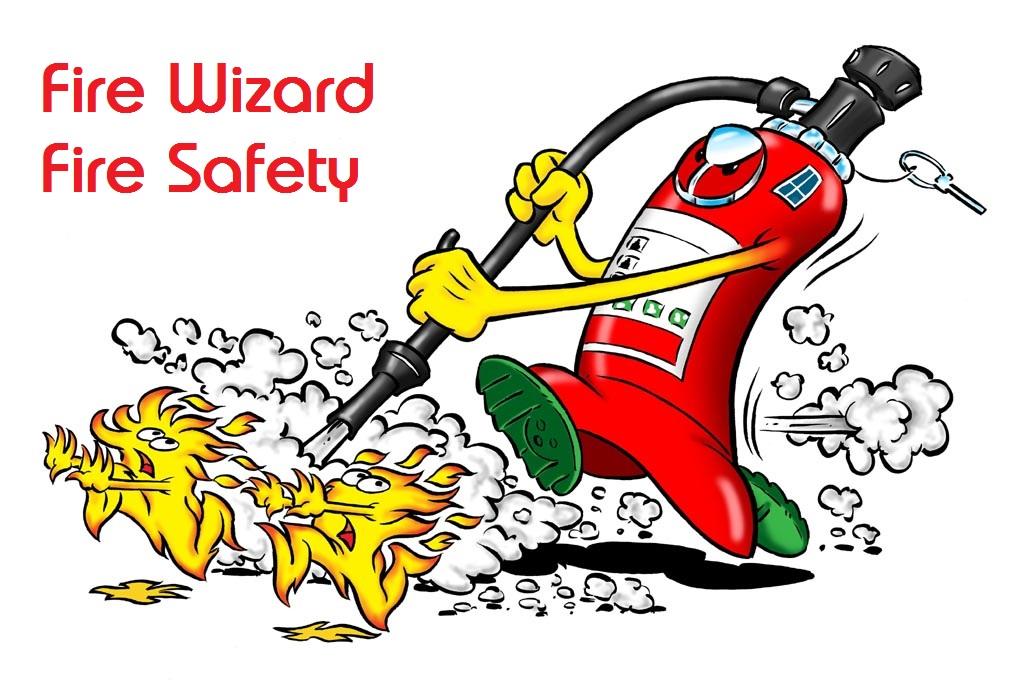-
Posts
2,704 -
Joined
-
Last visited
Everything posted by AnthonyB
-
You won't find it as Building Regulations are functional and only give broad aims, as does the Fire Safety Order under which the relevant clause is: (f)emergency doors must not be so locked or fastened that they cannot be easily and immediately opened by any person who may require to use them in an emergency; A good fire risk assessment would identify that in the situation you describe an escape mortice deadlock would meet the requirements of Article 14 (2)(f) of the Order
-
A correctly installed Sheltered Housing fire alarm system should not be heard in the flats, also it shouldn't be going off that often and left running for as long. It appears there is inadequate fire safety management of your premises and I would suggest that if the management aren't dealing with it you contact your local fire service's enforcement team (not your local station or community fire safety team) to investigate for you.
-
It should be, if built correctly, in a different fire compartment from the flats so it shouldn't matter if there is a fire there, the flats don't need to know in line with stay put principles. Full evacuation is a last resort in residential and I would be reluctant to extend the system for this unless it was the only viable option...after all in reality it doesn't work as well as people think.
-
Without seeing the premises or at least plans it's difficult, but in smaller cafes, especially without full kitchens (& so no high risk frying), there is often no need for fire doors or fire resisting partitions. Simple starter guidance for small premises is here: https://assets.publishing.service.gov.uk/government/uploads/system/uploads/attachment_data/file/14879/making-your-premises-safe-short-guide.pdf
-
If it's a finished floor height of 11m plus then you should have access to both exits, which if partitioned after current building regulations came into being shouldn't go through another tenants space (it did used to be accepted)
-
Very weird. I'd expect the pool and associated ancillary accommodation to operate full evacuation and so have at least the L5/M type set up it seems to have, but the actual flats I'd expect only to have detectors to the common areas if there are smoke vents, or the common overkill of smokes, sounders, call points. I don't suppose anyone can dig out the original design fire strategy?
-
Current building regulations removed the requirement for internal doors to have closers so they are OK, but it was incorrect to remove the front door closer and you will need to put that back.
-
If it's got it's own closer rather than just being bolted then that usually is a good indicator that the whole width of both doors was required for escape at the time of installation based on the occupancy numbers, discounting of exits etc. as oppose to just for floor moves. If your Means of Escape calculations, done correctly, indicate you only need the main leaf and you want to keep the quarter bolted then you should be OK
-
Technically both, but I'd not get too worried if the one with a lock in was the only one signed. For the cost you might as well do it on both and be belt and braces.
-
The inch rebate harks back to the days of fire doors before the introduction of intumescent strips and cold smoke seals and isn't usually needed on a door with such items fitted. Manufacturers instructions should be followed and it should be noted that a tested rated doorset includes the frame as well as the door so care needs to be taken with a new door in an existing frame. The fire door specialists on here will give a more detailed response.
-
Are the children to be supervised?
-
Because flats are private dwellings and the historical approach legally has been for almost ever is that "an Englishman's Home is his castle" so the government does not intrude into the privacy of the home except where absolutely necessary (most often at the build and alteration stage through Building Regulations).The Housing Act does apply, mostly focusing on housing that is let. Correctly built flats do not usually benefit from communal alarms and these have led to deaths in a couple of cases. Where you have flats not built to standard or that are poorly converted then alarm systems that include some elements in the flats would be appropriate. A history of the legislation as well as the current approach for new & existing flats is in https://www.local.gov.uk/sites/default/files/documents/fire-safety-purpose-built-04b.pdf Information for HMO's and certain conversions is at https://www.rla.org.uk/docs/LACORSFSguideApril62009.PDF
-

Do converted flats require fire risk assessment?
AnthonyB replied to a topic in Fire Risk Assessments
A fire risk assessment must be reviewed regularly and updated if there are any changes to risks, processes, people, structure, layout, etc No set timescale exists for a review, but the benchmark standard based on court cases and enforcement notices indicates annual as a minimum. Some premises have FRAs that are several years old, but as they have been reviewed annually and nothing has changed, have been deemed adequate. So if they are just commissioning a review then they are in the right as it's grossly overdue, although if using an external provider most would (rightly) insist on a full reassessment after an 11 year gap -
As it's Building Work for the Purposes of Building Regulations I would guess they want a completion certificate from Local Authority Building Control or the Approved Inspector the work was notified to?
-
Whilst you have no obligation to do so I would get an accredited fire risk assessment provider to inspect the premises with a few to the real implications of a split as part of due diligence before purchasing as there is a risk you could inherit a premises with restrictions on usage or requiring capital expenditure to be compliant. Having done FRAs as part of purchasing due diligence whilst many are smooth there have been others leading to either a renegotiated price or even withdrawal from the purchase.
-
Up to make you go through that door. If there is a change of direction after the door then you add the additional sign there. There is no go through and then turn sign. Left arrow above a door means don't use the door go left instead.
-
My thoughts are you should get a refund and new FRAs. Approved Document B is irrelevant for FRA in existing flats. LACORS is the correct guide especially if due to the style of conversion they are section 257 HMO's. Even if purpose built the LGA Guide applies which, whilst it does sometimes require smoke control works, is far more holistic than just blindly following new build standards.
-
London no longer has it's own specific regulations affecting fire safety, the old London Building Acts are gone.
-
It's very old and similar to a Winchester Bolt and other old fastenings. For most of these the only non destructive way to access, test and service the latch is by unscrewing/disassembly. Whilst existing locks of this type can be tolerated in a Fire Risk Assessment in certain circumstances replacement with a modern approved fastening is preferable, particularly as it's a less common type of older lock for which spare components and glasses will be hard to find.
-
The Fire and Rescue Service enforce the fire regulations and have specialist inspecting officers for this role (who would know all the rules and regs) so they are the right people to contact, but it must be the right department, the local station may not have one of the inspecting teams based there (so you just got a non specialist firefighter with no enforcement powers) and instead you need to approach the correct department direct, they have different names in different brigades but you can usually find them on the website from the business fire safety pages (or in the case of London it's flats fire safety pages)
-
I'd second that, your service provider obviously has no clue about extinguishers and is ripping you off. Cartridge extinguishers are rare these days and have no gauge. Correct servicing of these each year involves (amongst other things) opening them up, replacing the O rings to the neck, removing and weighing the cartridge, examining the interior of the body (removing the contents as required to do so) checking the spindle and valve, blowing the diptube and hose to check for obstruction. Stored pressure extinguishers have gauges and cannot be opened up for annual inspection and are check weighed and the gauge tested for free movement using a special tool and the hose removed and blown to check for obstruction and the o ring replaced (amongst other things). If the gauges are in the red then, even if still full of foam or powder the pressuring nitrogen has leaked off (either due to partial use and even less than a second of discharge can lead to this; or through wear and tear of the spindle o-ring; or generally a faulty valve; or rust leading to pinhole rupture) and this THEY WILL NOT WORK! Get them replaced along with the cowboys who are 'servicing' your equipment.
-
You wouldn't normally design that in a building, but I have seen it done in existing buildings where historically it was the only and lowest risk way of adding a second exit.
-
That's for new builds or refurbs and where Approved Document B is not being used. BS9999 is NOT a risk assessment guide, is NOT a legal requirement and is NOT retrospective. The law is quite clear that all provisions are risk based. Far too many practitioners spend other peoples money by getting RP's to put stuff in that is not legally required as it's easier than actually assessing the risk and giving RP's an informed choice. Would it be nice if every lift was upgraded to include fire alarm interfacing? Yes Does it actually need to be done? No, not across the board for existing buildings. When was the last time in the UK when there was a fatality or even a near miss from someone using a lift in a fire? Never seen it done in 20 years of evacuation drills either, except where managed use of the lift was part of an evacuation plan.
-
Based on the draft revision to Building Regulations then yes: [Care Homes] Sprinkler systems 2.53 When a sprinkler system is provided in accordance with section 10, the following variations to the guidance given in paragraphs 2.42 to 2.52 are acceptable. a. Fire doorsets to bedrooms need not be fitted with self-closing devices. b. Protected areas may contain more than 10 beds. c. Bedrooms may contain more than one bed. If any of the variations are made, the management procedures should take account of the larger number of residents that may need assistance, and the need to manually close bedroom doors during sleeping hours. NOTE - this is only a DRAFT, however is likely to be accepted and come in during 2019.

